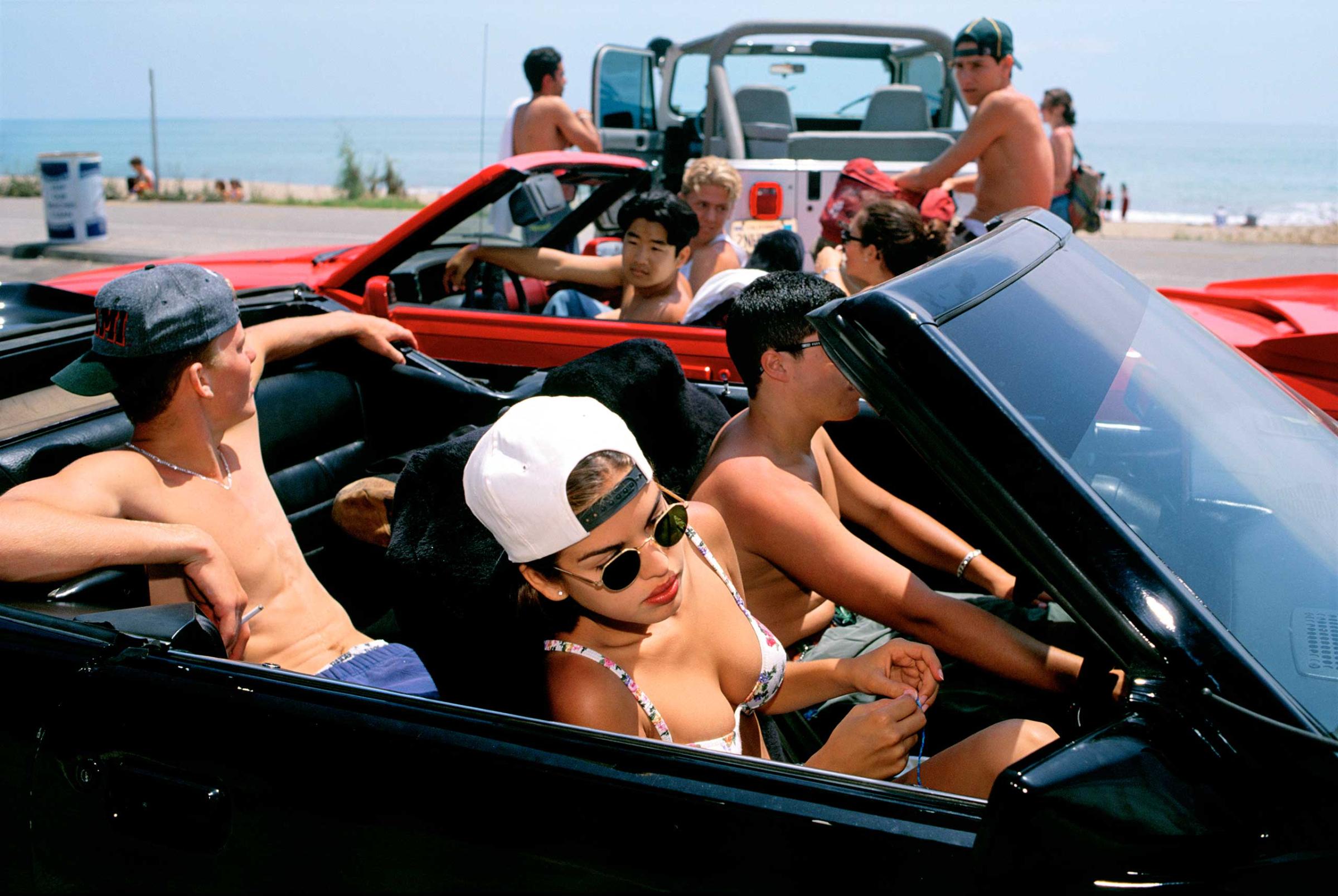
The photo that really launched my career was called Mijanou and friends from Beverly Hills High School on Senior Beach Day, a picture I took in 1993 in Santa Monica, Calif., as part of my project Fast Forward: Growing Up in the Shadow of Hollywood.
I came to make this picture circuitously through an internship at National Geographic, which was the professional experience to which my career is also indebted. In the process of making this photograph and the project for which it became the iconic image, I found my voice as a photographer.
In college, I had studied film and anthropology and spent a year traveling around the world, during which I decided I wanted to examine culture as a profession. As part of the journey toward that goal, I became an intern at National Geographic and expected to spend my future documenting the exotic, the other.
After my internship, my first assignment for National Geographic was a story about the Zinacenteco Indians in the highlands of Chiapas. The subject was interesting but very challenging. As a woman, my access was mostly limited to other women who only spoke the Maya language I was struggling to learn. Once I traversed the language barrier, it was still very difficult to gain permission to photograph because it was a culture that traditionally believed that taking one’s pictures meant taking one’s soul. Each photograph was the result of a protracted pre-negotiation. While I was struggling to make pictures there, I started dreaming of photographing in a place where people actually liked being photographed. I started to think about the prospect of documenting a culture that I understood, where my perspective and understanding could actually make a difference in my seeing.
I found an old copy of Bret Easton Ellis’s Less Than Zero, a groundbreaking novel about the jaded alienation of the young and rich in Los Angeles, on the bookshelf of our rented house in Chiapas. As I reread it, I thought about how people around the world were fascinated by the depiction of Los Angeles kids in the popular TV show Beverly Hills 90210. I realized that the world I grew up in, Los Angeles, was worthy of the same kind of sociological and anthropological study, that as photographers, anthropologists and documentarians, we customarily turn on the other rather than on ourselves.
So I came back to my hometown and started documenting kids in Los Angeles, the place that fabricates the popular culture that is exported around the world. I was interested in how kids in Los Angeles seem to grow up quickly under the influence of Hollywood, and how they are affected by the culture of materialism and the cult of image.
This photograph of Mijanou ended up being the cover of the book and was published and exhibited internationally. Mijanou wasn’t rich, but she lived in a world where her friends were. She told me about the pressures of her world and how it was hard when you could not keep up, but she also recognized that her beauty allowed her entrée into the popular clique.
I ended up photographing and interviewing kids in Los Angeles for several years. Interestingly enough, National Geographic killed my Maya story and funded the Los Angeles kids project I had started on my own with their first photo development grant.
Once I had the pictures, I dreamed of making a book but it took me two years and more than 20 rejections to find a publisher. After I had exhausted almost all the photo publishers, I went to the one I didn’t think I had a chance in hell with, Knopf, and they offered to publish 15,000 copies. It was a Cinderella story that got even better when I went on press in Singapore and my book packager called me at 1am after our first day to say the International Center of Photography had offered me an exhibition. The book was even optioned by Columbia Pictures.
But the most important part of the picture and the project was that it helped me find my voice, and I have been drawing inspiration from the creative direction of that early work ever since.
Lauren Greenfield is an American documentary photographer and filmmaker. In April 2016, the results of her long term work will be the subject of a thematic retrospective, entitled WEALTH: The Influence of Affluence at the Annenberg Space for Photography in Los Angeles, which will coincide with a new monograph published by Phaidon.

More Must-Reads from TIME
- Donald Trump Is TIME's 2024 Person of the Year
- Why We Chose Trump as Person of the Year
- Is Intermittent Fasting Good or Bad for You?
- The 100 Must-Read Books of 2024
- The 20 Best Christmas TV Episodes
- Column: If Optimism Feels Ridiculous Now, Try Hope
- The Future of Climate Action Is Trade Policy
- Merle Bombardieri Is Helping People Make the Baby Decision
Contact us at letters@time.com